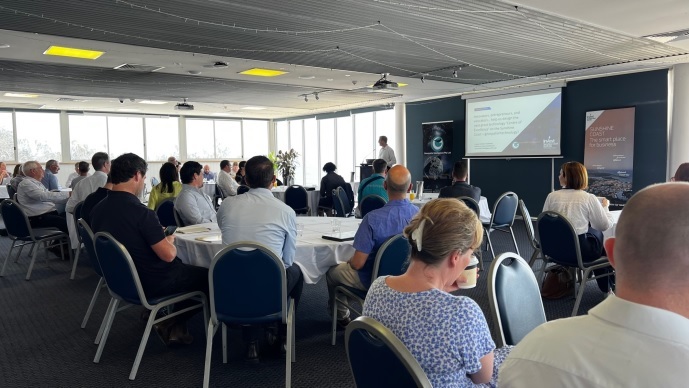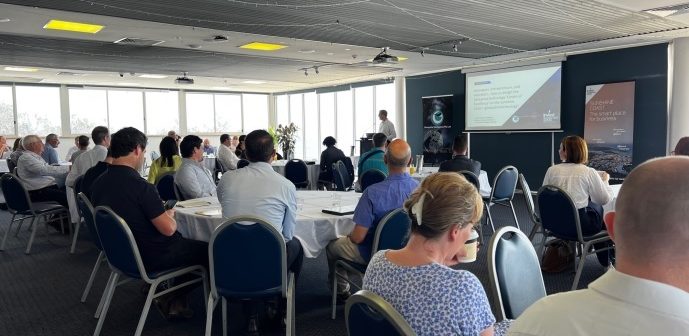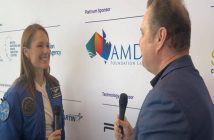
Written by Brad Howarth.
Geospatial intelligence has the potential to solve many of Australia’s greatest challenges and create new social and commercial opportunities. It also provides an opportunity to be a driver of new employment and investment opportunities for Australia’s Sunshine Coast.
Geospatial intelligence (or geo-int) takes data from space-based imaging and sensing satellites and uses a variety of analytics techniques to translate that information into actionable insights. These have been applied to problems as diverse as managing large marine and land-based ecosystems through to monitoring the spread of disease and tracking the impact of fire and floods.
The possibilities of geo-int were the topic of an ideation session held in Maroochydore on the Sunshine Coast, Queensland in October, where numerous local and national specialists from the commercial, academic and public sectors came together to discuss the idea of creating a Geospatial Intelligence Centre of Excellence for the region.
The session explored many ways in which geo-int is being used to solve difficult problems today, and asked how the creation of a geo-int capability on the Sunshine Coast might benefit both the local community and foster the uptake of geo-int services both nationally and internationally.
Commencing with an address from the CEO of the Australian company Geospatial Intelligence, Rob Coorey, attendees were shown how geo-int was already being applied in numerous commercial and public sector use cases. As a leading company in its field, Coorey explained how Geospatial Intelligence had a desire to stimulate the uptake of geo-int and create new opportunities for the technology’s application.
His reason for exploring the potential of the Sunshine Coast as the location for a specific geo-int capability stemmed from his company’s alignment with the innovation strategy being pursued by the Sunshine Coast Council. This included Council’s actions such as its investment in an undersea international data cable connection and supporting infrastructure, and other initiatives designed to attract high technology jobs and investment to the region.
Attendees explored a range of use cases that could be enhanced through the application of geo-int, including bushfire management, protection of critical infrastructure from natural disasters, and support for initiatives relating to the Brisbane 2032 Olympic and Paralympic Games.
Attendees also discussed numerous potential activities that a Centre of Excellence could undertake to foster the development of local geo-int capabilities.
Frequently cited amongst these was recognition that (as with many aspects of the technology sector) Australia’s uptake of geo-int was being stymied by a lack of specialist skills, especially those relating to analytics and data science. Hence one of the key functions of a Centre of Excellence should be to attract and develop suitable skills, starting with raising awareness and interest in geo-int amongst school children and working with local universities to develop specialist subjects and course content that could help feed skilled professionals into the sector.
Secondly, attendees discussed the need for greater coordination and collaboration among existing industry participants. One of the functions suggested for a Centre of Excellence is to map local and national capabilities together with connecting different skills and service providers to amplify their capabilities.
A third function could then be to map potential sources of funding for geo-int projects. Combined with the coordination capability, this would ensure that high value projects could be developed and delivered in a timely manner, such that the benefits from geo-int activities could be delivered faster. This was seen as especially beneficial for short timeframe requirements such as supporting emergency response activities.
In closing, Coorey discussed Geospatial Intelligence’s desire to partner with local organisations in the short term to begin exploring projects that could form the foundation of ongoing relationships that could build over time to create the foundations of a Centre of Excellence.
Council also discussed its intent to follow up on many of the ideas expressed and find ways, working with industry, to bring them into effect.
Ultimately, these capabilities would come together into a unified resource that would serve to promote the benefits of geospatial intelligence, develop a skills pipeline, coordinate activity, and ensure that Australia in general and the Sunshine Coast specifically became known as a world-leading location for this field of technology, whose reputation would in turn attract additional interest and investment.





